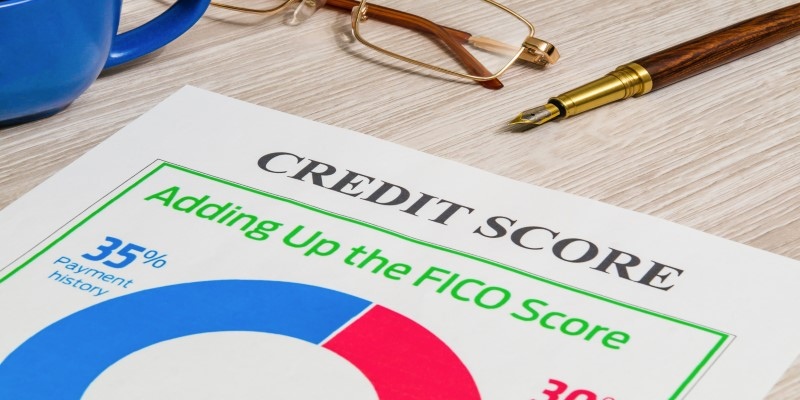The Dangerous Appeal of Subprime Credit Cards: A Closer Look
Dec 01, 2023 By Triston Martin
In the money world, having a not-so-great credit history can make things tricky. Subprime Credit Cards might seem like a way out, offering to give you credit even when others won't. But, hold on – there's a catch. Behind the scenes, these cards have some risks that can mess up your finances.
In this journey, we'll talk about what makes Subprime Credit Cards seem attractive. We'll also uncover the parts that can cause problems for people. So, get ready to explore the not-so-fun side of Subprime Credit Cards, where things might not be as simple as they seem.
Top of Form
Insights on the Dangerous Appeal of Subprime Credit Cards
Subprime Credit Cards may seem like a lifeline for those with less-than-stellar credit scores, offering a way to access credit when traditional options slam the door. However, beneath their enticing surface lies a difficult journey that many unsuspecting consumers find themselves embarking on.
The Temptation of Approval
One of the primary attractions of Subprime Credit Cards is their relatively lenient approval process. Traditional credit card applications can be a battleground for those with a less-than-perfect credit history. Subprime cards, on the other hand, often boast higher approval rates, luring individuals who have faced rejection elsewhere.
These cards can be a tempting solution for someone in urgent need of credit. However, the ease of approval comes with a hefty price tag in the form of exorbitant interest rates and hidden fees. It's crucial to weigh the short-term gain against the long-term financial strain that might follow.
The Mirage of Credit Building
Some Subprime Credit Cards market themselves as tools for rebuilding credit. While it's true that responsible use of credit can positively impact credit scores, the devil is in the details. The dangerous appeal here lies in the misleading promises of a swift credit score recovery.

In reality, the high fees and interest rates associated with subprime cards can quickly offset any positive impact on credit scores. It becomes a precarious cycle where attempting to improve financial standing leads to further entanglement in a web of debt.
The Fine Print: Unveiling Hidden Costs
The danger of Subprime Credit Cards often lurks in the fine print – a territory few dare to venture into. The attractive features highlighted in bold fonts are often overshadowed by the asterisks and tiny text detailing fees, penalties, and terms that can financially cripple an unsuspecting cardholder.
Annual fees, over-limit charges, and sky-high interest rates are common culprits. The fine print can turn a seemingly affordable credit option into a financial nightmare, and cardholders may find themselves drowning in debt before fully comprehending the true cost of their seemingly beneficial card.
The Cycle of Minimum Payments
Subprime Credit Cards are notorious for encouraging the minimum payment trap. The minimum payment may seem manageable at first glance, but it barely scratches the surface of the principal amount. This creates a cycle where cardholders pay the minimum, only to see their balance barely decrease due to accruing interest.
The dangerous appeal here lies in the illusion of affordability. Cardholders may find themselves stuck in a never-ending loop, making minimum payments and barely making progress in paying off their debts. The result? Prolonged financial instability and a perpetual struggle to break free from the clutches of debt.
The Convenience Conundrum
Subprime Credit Cards may seem like a quick fix for immediate financial needs, providing a convenient way to access credit. However, the convenience comes at a steep price. High interest rates and hidden fees can turn the ease of access into a financial burden, making it essential for consumers to question the true convenience of these seemingly accessible cards.
What's the Midway Out?
Understanding the dangerous appeal of Subprime Credit Cards is the first step toward making informed financial decisions. While these cards may seem like the only option for those with poor credit, there are alternative pathways to consider:
Secured Credit Cards
Secured credit cards provide a safer alternative for those looking to rebuild their credit. By requiring a security deposit, these cards minimize the risk for both the cardholder and the issuer. Responsible use of a secured card can gradually improve credit scores without the exorbitant fees associated with subprime alternatives.

Credit Unions
Credit unions often offer more lenient terms than traditional banks, providing a middle ground for individuals with less-than-perfect credit. By becoming a member of a credit union, individuals may gain access to credit cards with lower interest rates and more reasonable fees.
Financial Counseling
Seeking the guidance of a financial counselor can be invaluable. These professionals can provide personalized advice, helping individuals navigate the complexities of credit and debt. Developing a realistic financial plan and understanding one's options is crucial in breaking free from the dangerous allure of Subprime Credit Cards.
Explore Alternative Lenders
Alternative lenders, such as online lending platforms, may offer more flexible terms for individuals with less-than-ideal credit. While interest rates may still be higher than prime loans, they can be more reasonable compared to Subprime Credit Cards. It's essential to shop around and compare terms before committing to any alternative lending option.
Consider Co-Signing
If securing credit independently proves challenging, another option is to consider having a co-signer. A co-signer with a stronger credit history can increase the likelihood of approval for a credit card or loan. However, both parties should be aware of the responsibilities and potential consequences associated with co-signing.
Conclusion
In the world of personal finance, the dangerous appeal of Subprime Credit Cards casts a shadow over those in vulnerable financial situations. The seemingly easy approval, promises of credit score improvement, and hidden costs create a minefield that can explode into financial turmoil.
Consumers need to approach Subprime Credit Cards with caution and explore alternative avenues that offer a more sustainable path to financial health. By understanding the risks and seeking viable alternatives, individuals can break free from the cycle of subprime credit and pave the way for a more secure financial future.





